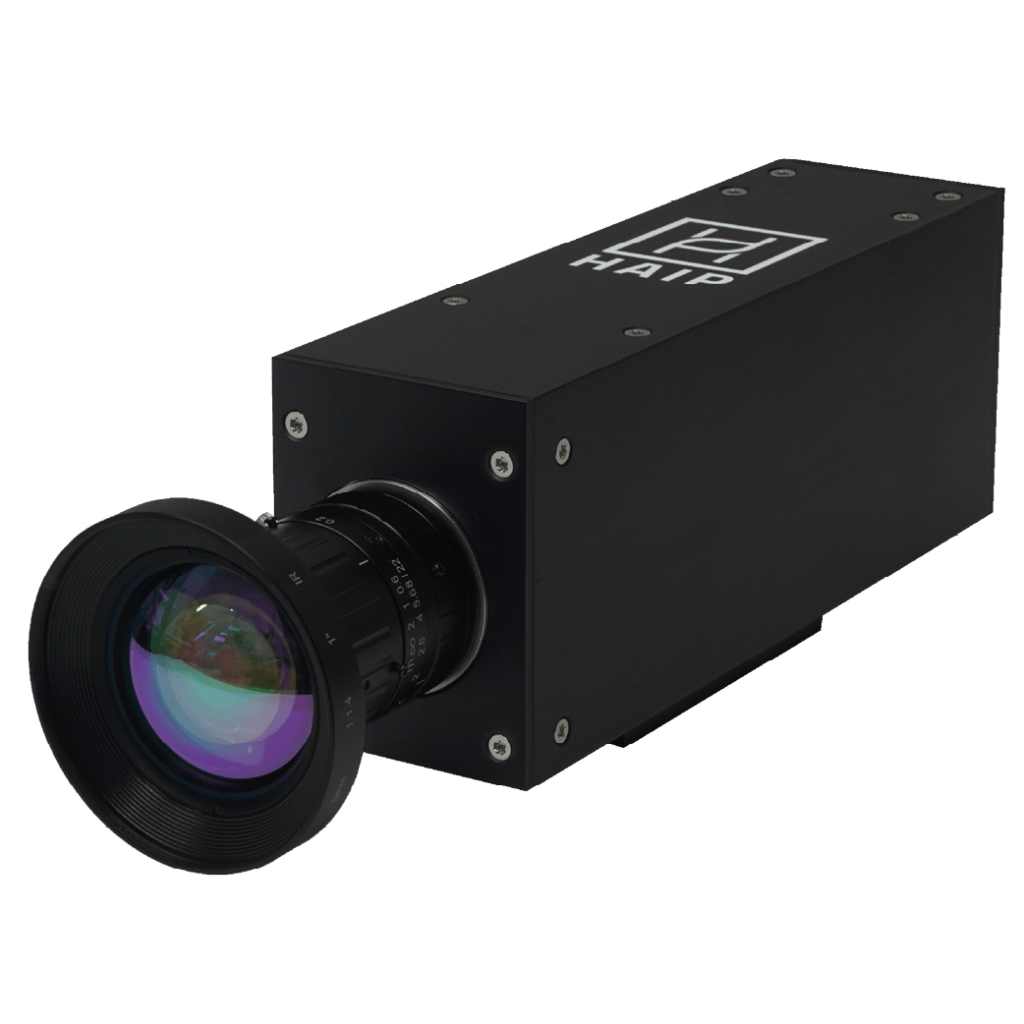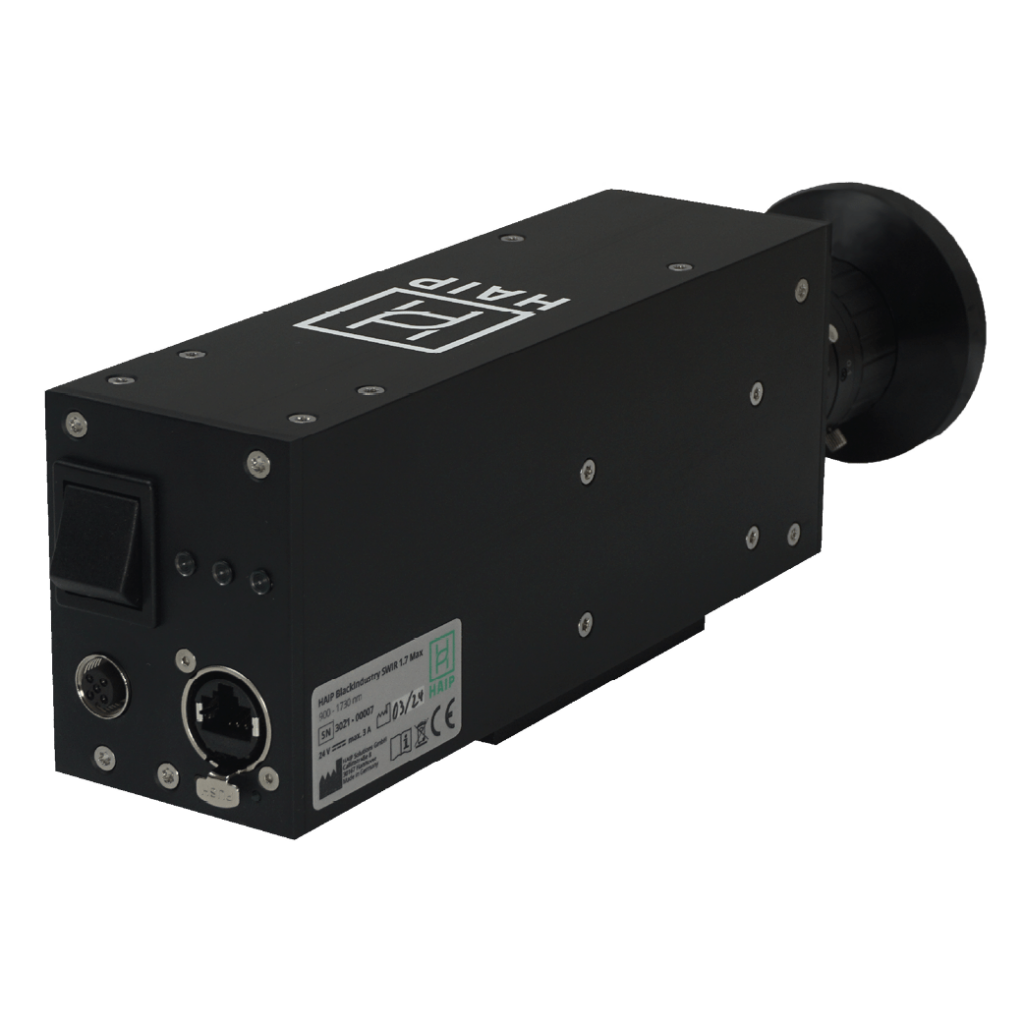Application Note
Food Industry
BlackIndustry SWIR 1.7 Max: Detection of Undesired Components in the Almond Production
1. The Almond - An Allrounder
Almonds, the edible seeds of the Prunus dulcis tree, have been prized for centuries for their delicious flavor and remarkable nutritional profile. Furthermore, they offer versatile applications with their various components. While the nutrient-dense core provides essential vitamins and minerals that are processed in food products like almond milk, flour and oil, the protective shell finds purpose in agriculture and livestock farming, where it is used as bedding material. When exposed to heat, almond shells form a charcoal-like product that can also be used to produce more resistant plastics. The skin of an almond on the other hand can serve purpose as animal feed or a soil additive in agriculture. This extensive use underlines the importance of almonds in both the food and industrial sectors and represents a sustainable and versatile use of resources.
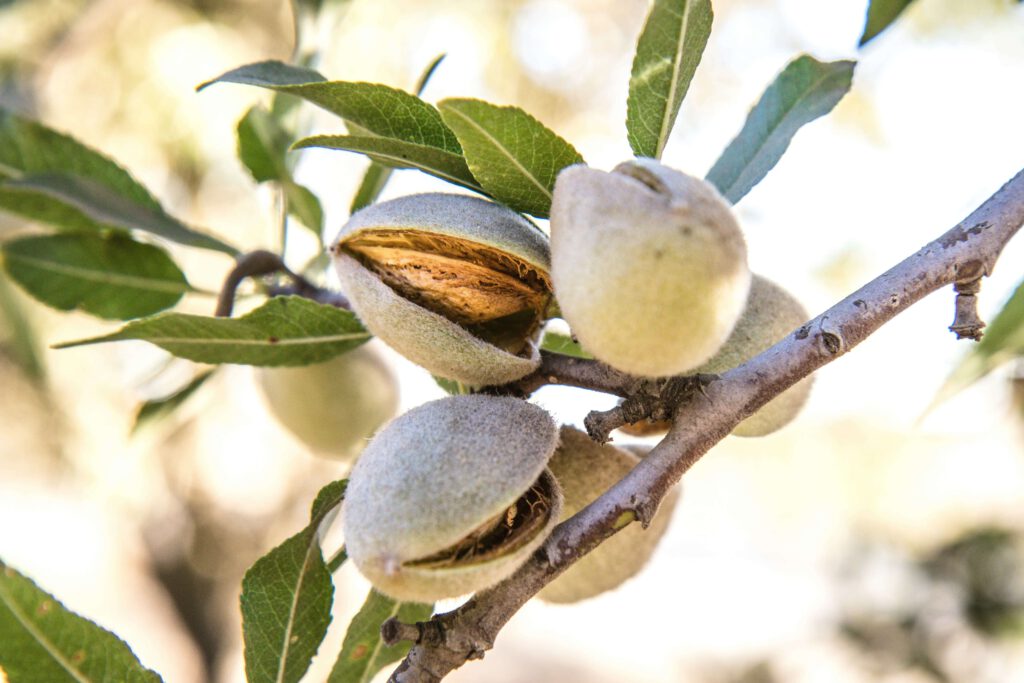
2. Problem: Ensuring Food Safety
Almond shells and other foreign objects like wood pieces, gravel and plastic particles can pose a risk during the processing of almond cores due to potential contamination. When almonds are harvested and processed, it is possible for foreign fragments to mix with the edible kernels, leading to safety concerns such as physical dangers, if consumed. Traditional sorting methods may not be able to effectively detect and remove these objects, increasing the risk of contamination of the end product. Hyperspectral imaging offers a promising solution to this problem, as it enables the detailed analysis of objects based on their spectral signature across a wide range of wavelenghts.
The Lifecycle of an Almond
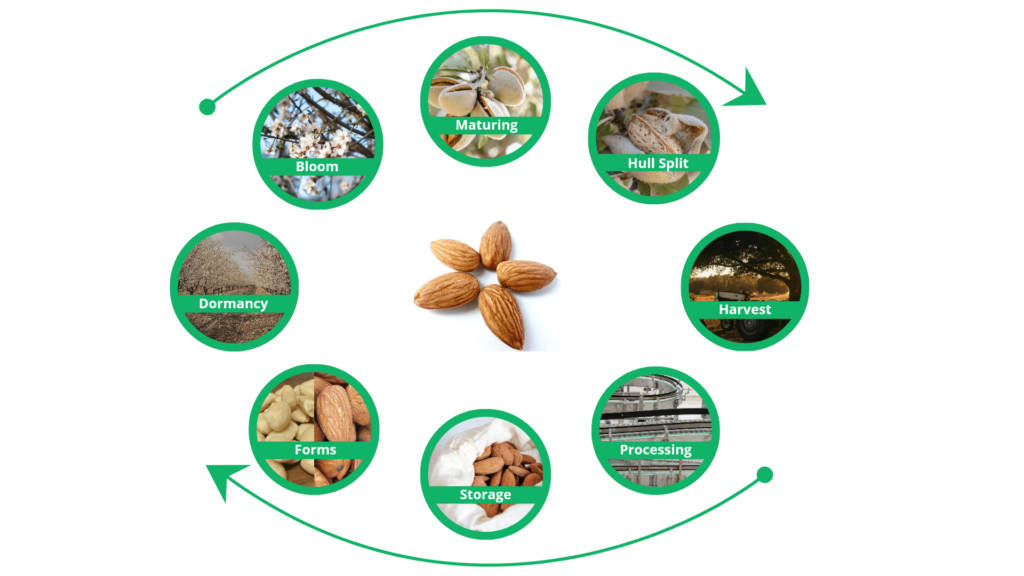
3. Solution: Sorting with Hyperspectral Imaging
Conventional RGB cameras quickly reach their limits, especially in nut sorting, as the components are sometimes very similar in color and shape. To guarantee food safety, hyperspectral imaging sensors should therefore be used in the sorting process of food products such as almonds. Hyperspectral imaging is an opto-electronic technology for the precise measurement of electromagnetic radiation reflected by an object. The intensity of the reflection as a function of the wavelength is displayed in a spectral signature curve. Since each material reflects the incident radiation differently, hyperspectral imaging can identify objects which the human eye is unable to differentiate.
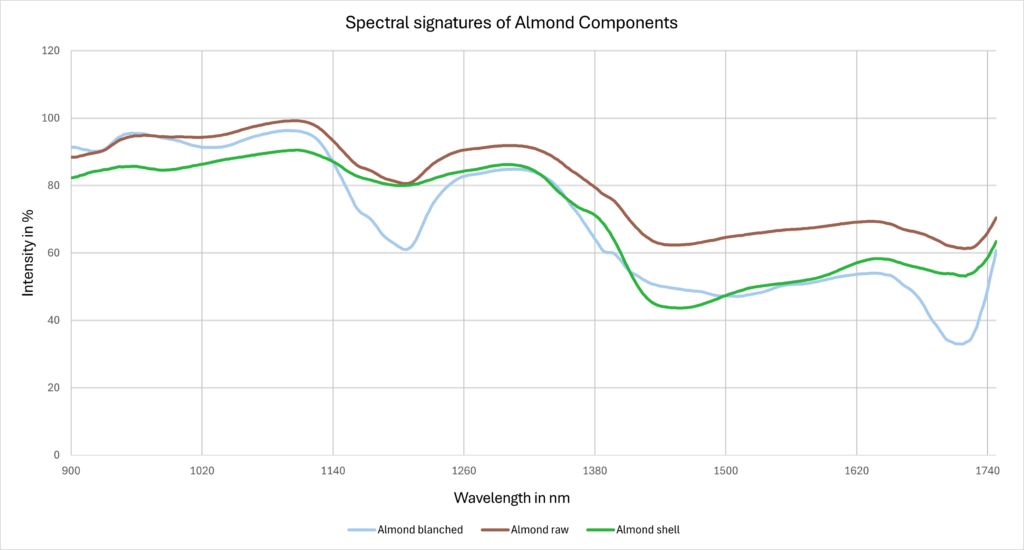
HAIP Solutions offers the solution for the food sorting sector: the HAIP BlackIndustry SWIR 1.7 Max camera. HAIP Solutions BlackIndustry SWIR 1.7 Max is a smart line scanning (pushbroom) hyperspectral imaging camera that enables the acquisition of realtime spectral data with very high spatial resolution. The camera provides a spatial resolution of 1280 pixels with up to 425 selectable spectral bands in the wavelength range from 900 nm to 1748 nm.
4. Case Study: Spectral Sorting of Almond Components
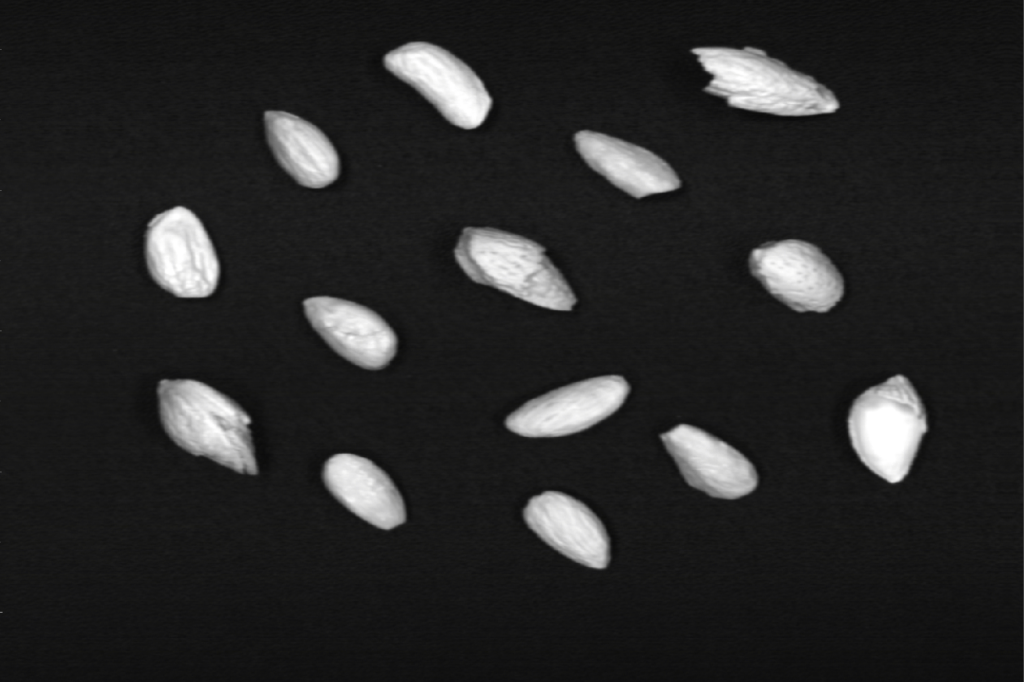
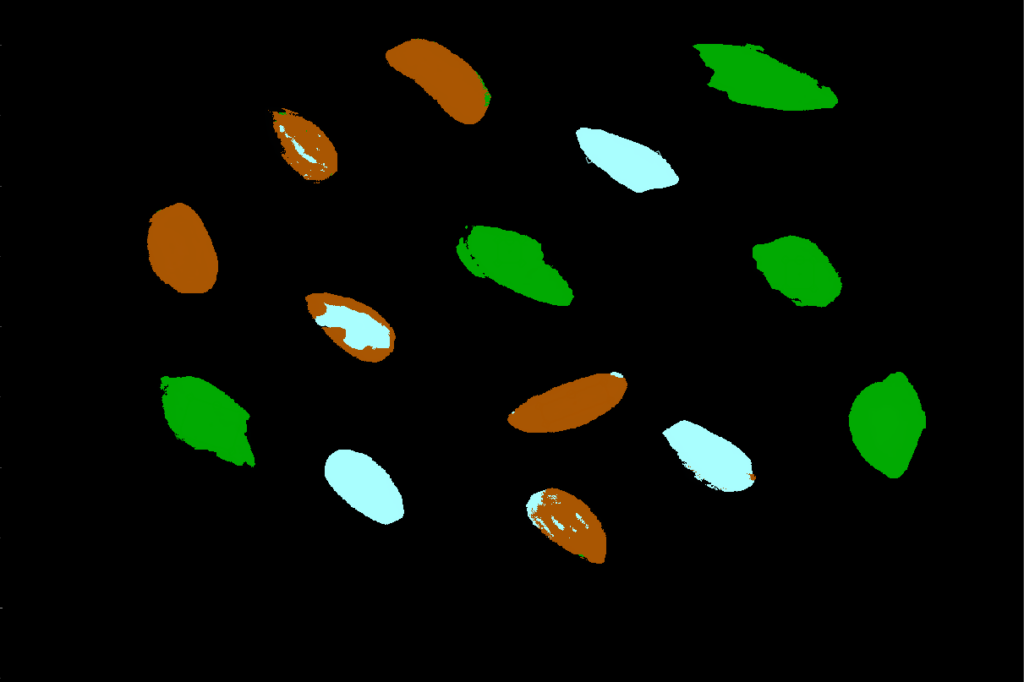
A case study was developed to demonstrate the use of the HAIP BlackIndustry SWIR 1.7 Max camera for the identification of the different almond components. The raw, brownish almonds were mixed with blanched almonds and fragments of almond shells. To investigate their spectral characteristics in the SWIR range, the samples were scanned by the camera. Classification with the HAIP BlackStudio software shows the significant spectral difference between the almond components. Qualitative characteristics can be examined by analyzing the respective absorption bands, e.g. for the fat and water content of the almonds. What a promising research approach!
